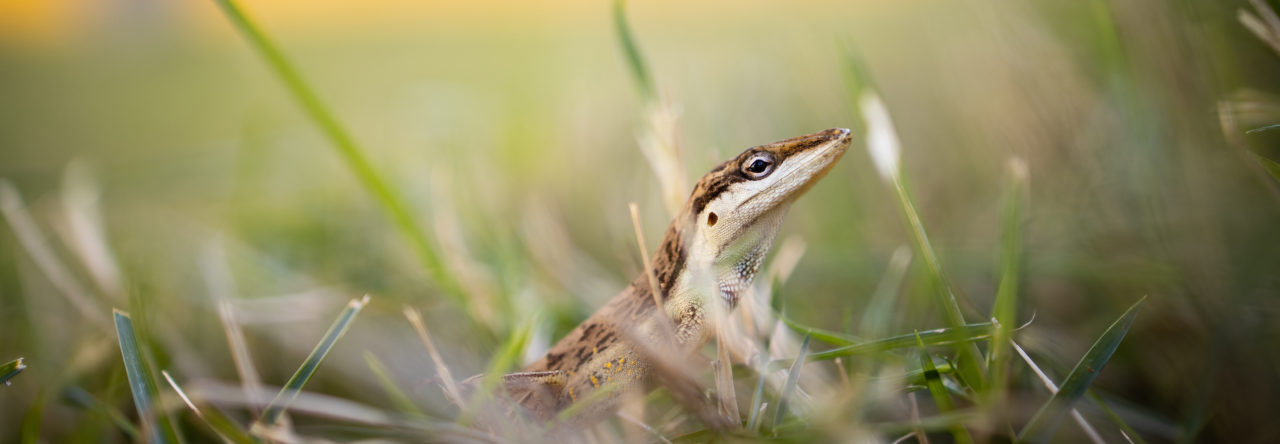
Anolis marcanoi. Photo by Rich Glor
reprinted from Dominican Today
The global prayer that motivates the celebration of Biodiversity Day today is a call to stop the loss of biological diversity, that is, the variety of species of plants, animals, and microorganisms that inhabit the planet in its various ecosystems.
Why is this biological variety important? For the United Nations, “biological resources are the pillars that sustain civilizations.” For example?
“Fish provide 20% of animal protein to some 3 billion people. More than 80% of the human diet is made up of plants. Approximately 80% of people living in rural areas of developing countries depend on traditional plant-based medicines for basic health care,” says the agency.
However, an estimated one million animal and plant species are currently endangered.
FLORA IN DANGER
In the DR, for 2011, the List of Endangered, Threatened or Protected Species of the Dominican Republic (Red List) published by the Ministry of the Environment indicated that “of the approximately 6,000 vascular plant species reported for the Dominican Republic, 547 were found to have some category of threat.”
Later, updated data collected in the Red List of Vascular Flora in the Dominican Republic (2016) indicate that some 1,388 plant species present some degree of threat. Some 841 more species than those registered in 2011.
Which of these species are the ones with the highest degree of vulnerability and critical status?
Research indicates that among the families with the highest percentage of their species under some degree of threat are those of orchids (Orchidaceae), palms (Arecaceae), and cacti (Cactaceae).
Indeed, of the orchid family, 145 of the 268 species studied are critically endangered, including the cacatica ( Tolumnia henekenii ) and the Quisqueya rosea.
25 species were included from the palm family (Arecaceae). Of these, there are 13 critically endangered: the red Manacla, Calyptronoma plumeriana; guano: Coccothrinax boschiana; the lake guano: Coccothrinax jimenezii; the guano de costa:Coccothrinax montana Burret; the palm Coccothrinax scoparia Becc; the tame guano: Coccothrinax spissa LH Bailey; el yarey: Copernicia berteroana Becc; the rain palm: Gaussia attenuata; the search Pseudophoenix sargentii H. Wendl; the frisk Pseudophoenix vinífera; the wild coquito: Reinhardtia paiewonskiana; the Thrinax radiata palm and the guaney: Zombia antillarum.
Of the cacti, eight species are critically endangered: the Bánica rose ( Pereskia marcanoi Areces ), the Bayahibe rose ( Pereskia Quisqueyana Alain), the spiny melon ( Melocactus lemairei and Melocactus pedernalensis ), the rose ( Pereskia portulacifolia ), the Melocactus praerupticola Arece s; the pitajaya ( Harrisia nashii Briton ) and the cagüey or avocado ( Dendrocereus undulosus ).
Within the families of compound flowers (Asteráceas), of the 99 analyzed there are 76 in critical condition, among them the Salcedoa mirabaliarum.
Other plants that are listed as critically endangered are three species of conifers (juniper): Juniperus gracilior var. ekmanii, Juniperus gracilior var. gracilior and Juniperus gracilior var. urbaniana and the cross stick (Podocarpus hispaniolensis laubenfels ).
You can see images of species of Dominican flora that is critically endangered in the following gallery: https://listindiario.com/la-vida/2017/08/03/476648/galeria-de-la-flora-dominicana
AND ANIMALS?
The distribution of local fauna is as follows: 483 species of amphibians, reptiles, birds and mammals; 527 species of marine and freshwater fish and 8,529 species of invertebrates (6,833 terrestrial and 1,696 marine). In total, 9,539 species, according to the 2011 List of Endangered, Threatened or Protected Species of the Dominican Republic (Red List) .
Which are in the worst state of conservation?
Among the critically endangered fish are two types of native grouper, Epinephelus itajara and Epinephelus striatus, and the endemic fish Cyprinodon higuey and Cyprinodon nicholsi.
Amphibians and lizards are among the most vulnerable. About to disappear are the endemic species of the Hispaniola crested toad ( Peltophryne fluviatica ); the Jarabacoa burrowing frog ( Eleutherodactylus bothroboans ); the red-legged frog of La Selle ( Eleutherodactylus furcyensis ); the La Selle brown frog ( Eleutherodactylus jugans ); the southern pastel frog ( Eleutherodactylus leoncei ) and the green spiny frog ( Eleutherodactylus nortoni ).
Also the Neiba telegraph frog ( Eleutherodactylus notidodes ); Neiba’s whistling frog ( Eleutherodactylus parabates ); the Rucilla stream frog ( Eleutherodactylus rucillensis), the Bahoruco red-legged frog ( Eleutherodactylus rufifemoralis ); the northern stream frog ( Eleutherodactylus schmidti ); the Massif du Nord’s whistling frog ( Eleutherodactylus sommeri ) and the Vallejuelo burrowing frog ( Eleutherodactylus tychathrous ).
Among the reptiles, the most threatened are the hawksbill turtle, Eretmochelys imbricata; the giant lucia of Villa Altagracia, Celestus anelpistus; the lucia of Pico Duarte, Celestus marcanoi; the slender Alto Velo anolis (lizard), Anolis altavelensis; the green-banded lizard, Anolis fowleri; the long-nosed lizard from La Selle, Anolis hendersoni; the sturdy red fan lizard, Anolis marcanoi; the Neiba twig lizard, Anolis placidus; the ricord iguana, Cyclura ricordii and the lizard Leiocephalus altavelensis.
Two species of skid lizards also appear in critical condition, Mabuya lineolata (striped skink from Hispaniola) and Mabuya sloanii (greater skink from the Antilles) and thirteen species of geckos or geckos (spherodactyls), all endemic.
Running snakes Haitiophis anomalus, Hypsirhynchus melanichnus, Laltris agyrtes and laltris haetianus; the snakes Mitophis absolepis, Mitophis calypso , Mitophis pyrites and Typhlops syntherus are also almost in critical condition, as is the American crocodile, Crocodylus acutus.
Of the birds, the diablotín ( Pterodroma hasitata ), the Spanish sparrowhawk ( Buteo ridgwayi ), the barb ( Coccyzus rufigularis ) and the owls Asio flammeus and Asio stygius are critically endangered.
The manatee ( Trichechus manatus ) is among the most threatened marine species and, as a curious fact, the solenodon ( Solenodon paradoxus) does not appear in the category of critical danger, but “endangered.”















